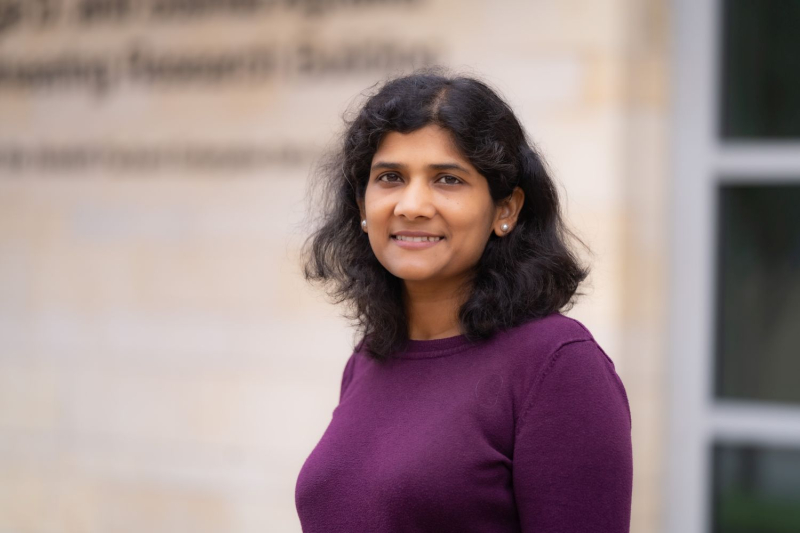Yashashree Kulkarni, Bill D. Cook Professor of Mechanical Engineering, has earned the prestigious BRITE award for about $410,000 from the National Science Foundation, as well as another $266,000 grant for collaborative research.
The BRITE award is for Kulkarni's research proposal, “An Integrated Theory of Continuum and Statistical Mechanics of Active Soft Matter.” The second grant is for her collaborative research, “Interface Enabled Plasticity In High-Strength Co-Based Intermetallics.”
These two grants span Kulkarni’s research in the role of mechanics in materials science to biology. The BRITE award focuses on biological membranes.
Biological membranes are interfaces that separate cells and their internal organelles from their environment. These membranes play a crucial role in processes such as response of cells to mechanical stimuli, transmission of messages through electrochemical signals, or exchange of nutrients.
To date, most mechanics-based studies have focused entirely on treating biological membranes as “passive” (or “dead”) since they are believed to fluctuate due to thermal vibrations of molecules only. However, there is growing consensus that membranes are actually "active” and are able to harness energy from external sources to execute specific functions when and where they need to.
According to the NSF, the BRITE (Boosting Research Ideas for Transformative and Equitable Advances in Engineering) award is designed to enable and create opportunities for experienced researchers – tenured or equivalent – to forge new directions or to enter new fields by capitalizing or branching out of their established domains, or to revitalize research after a hiatus, or to explore ambitious, bold, and expansive research ideas that cover wide intellectual spaces. There are four distinct funding tracks: Synergy, Pivot, Relaunch and Fellow. Each track provides dedicated time and resources to the PI.
“I am really excited and grateful to receive this BRITE Pivot award to support my group’s research in understanding the mechanics of active membranes to gain insights into their role in critical biological phenomena, and possibly pave the way to better understand, control, and perhaps mimic active biological matter for biotechnology and healthcare applications,” Kulkarni said.
The second grant focuses on intermetallics, with their remarkable properties of high mechanical strength and high melting temperatures. They are excellent candidates for next-generation structural applications that can transform national defense systems and industries like aerospace, automotive and energy.
However, conventional intermetallics are very brittle at room temperature, which adversely impacts their potential as structural materials. Kulkarni will be conducting this research with Xinghang Zhang, Professor of Materials Engineering at Purdue University's School of Materials Engineering.
Kulkarni and Zhang aim to understand the mechanical behavior of nanocrystalline intermetallics with a novel core/shell architecture that endows them with simultaneous high strength and unprecedented deformability at room temperature.
“Dr. Zhang is designing cobalt-based microstructures with novel grain boundaries, and we are performing simulations on million-atom samples on supercomputers to understand the deformation mechanisms from the scale of atoms,” Kulkarni said. “As engineers, we want to see how these novel interfaces lead to high strength and deformability in intermetallics to open up avenues for designing novel materials for structural needs.”
